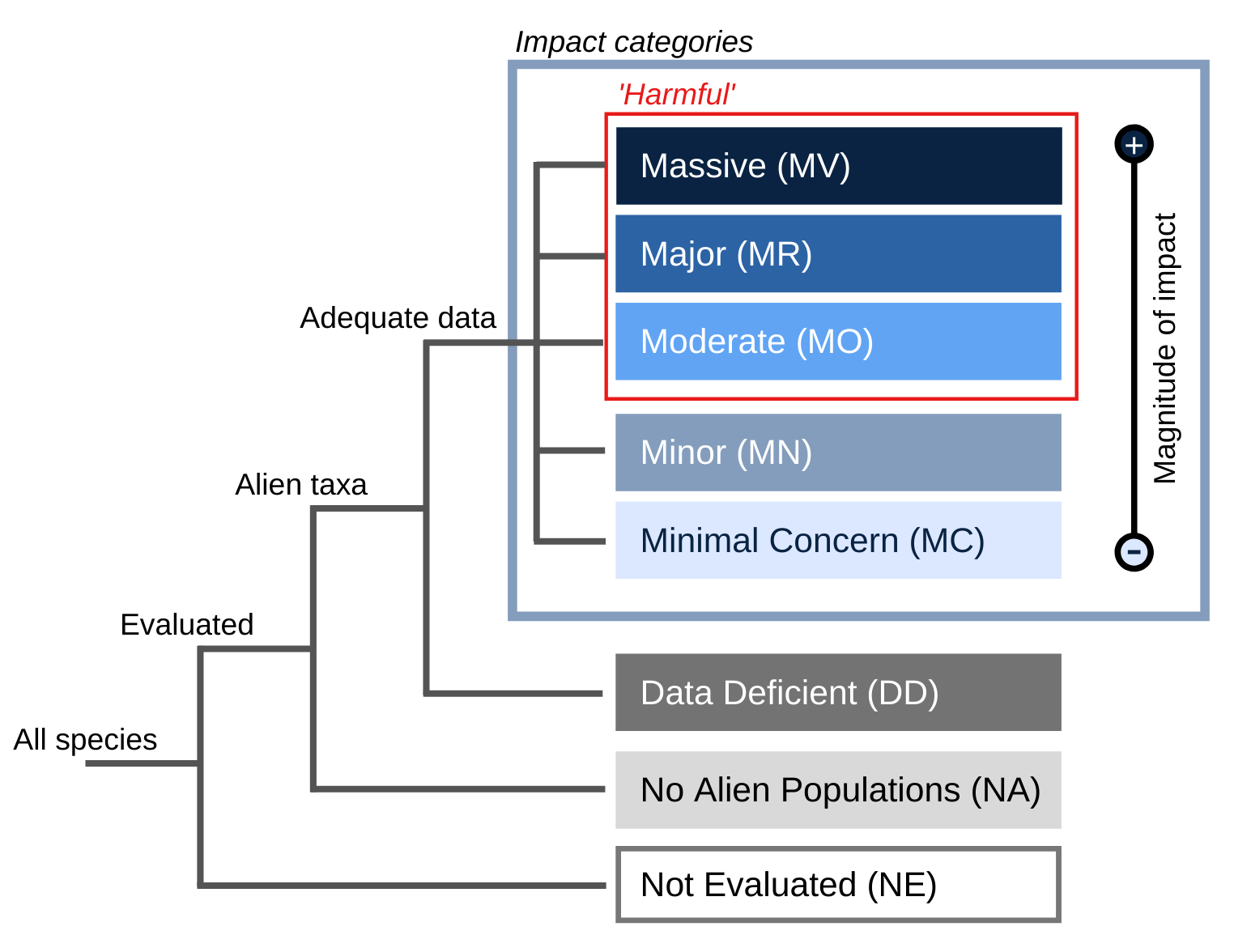Duttaphrynus melanostictus
System : Freshwater_terrestrial
Kingdom
Phylum
Class
Order
Family
Animalia
Chordata
Amphibia
Anura
Bufonidae
- Not Evaluated
NE - No Alien Population
NA - Data Deficient
DD - Minimal Concern
MC - Minor
MN - Moderate
MO - Major
MR - Massive
MV
- General
- Distribution
- Impact
- Management
- Bibliography
- Contact
Common name
Asian common toad (English)
Synonym
Bufo melanostictus ,Schneider, 1799
Similar species
Summary
The species Duttaphrynus melanostictus is one of the most widespread species in its genus across tropical Southeast Asia. The species prays on native insects and other small vertebrate species. It causes decile in population size of reptiles and amphibians through completion and is a risk to human health due to its toxicity. The species is listed in the IUCN Red List of Threatened Species as Least Concern (IUCN, 2018).
Species Description
The colour of D. melanostictus is greyish or reddish brown. The size adults range from 60 to 99mm The body size of females is slightly larger than the body size of males (Berry & Bullock, 1962). The head has elevated bony ridges, with long dark crests that border the eyelids and run down on either side of the eye. Tadpoles are black and small, up to 15 mm long (Csurhes, 2016). The species is widely spread in Southeast Asia. It commonly occurs in northern Pakistan through Bangladesh, India, Sri Lanka, southern China, Myanmar, Laos, Viet Nam, Thailand, Cambodia to Malaysia, Singapore and parts of Indonesia.
Notes
According to species distribution models the species is potentially invasive to Madagascar and Australia (Csurhes, 2016; Moore et al., 2015). Individuals have never been recorded on the Australian mainland. However few individuals have been detected on shipping containers by Australian Quarantine and Inspection Service (AQIS) (Trainor, 2009).
Lifecycle Stages
The larvae metamorphosis happens within 25 to 30 days. The length of the larvae varies from 34 to 90 days. The average life span is 4 to 10 years (Berry & Bullock, 1962).
Uses
The species is introduced unintentional and intentional. In Timor-Leste the species was introduced to control mosquito numbers (Trainor, 2009).
Habitat Description
The species occurs naturally in open habitats such as grasslands and deciduous dipterocarp savannah but also in the proximity of human habitation and cultivation (Berry & Bullock, 1962; Wogan et al., 2016). It occurs up to a sea level of 2000m in temperate, tropical and sub-tropical habitats. The species can tolerate a salinity level of up to 1% (McClelland et al, 2015).
Reproduction
The species is oviparous. The Asian common toad (D. melanostictus) breeds twice per year, most likely once per year, depending on rainfall and temperature. The breeding kates place in still water bodies or slowly moving river streams. The breeding season in semitropical regions in Asia dues from February to April (Huang et al., 1997). “Males congregate at breeding sites where they call to females. The call is a ‘creo-o-o’; cro-ro-ro-ro-ro-ro’ that is repeated in choruses rather monotonously. The calling males may be heard throughout the night during rain and sometimes on overcast days”, (Daniels 2005: in Csurhes, 2016). Approximately 40,000 eggs are laid per clutch.
Nutrition
D. melanostictus mainly feeds on insects within a size rage of 5.0 to 20.0 mm (Berry & Bullock, 1962).
Principal source: Csurhes, 2016. Berry & Bullock, 1962. Trainor, 2009.
Compiler:
Review:
Publication date:
Recommended citation: Global Invasive Species Database (2025) Species profile: Duttaphrynus melanostictus. Downloaded from http://iucngisd.org/gisd/speciesname/Duttaphrynus+melanostictus on 15-12-2025.
General Impacts
The species has been introduced to Maluka, Papua and Sulawesi, reported in Timor Leste and Madagascar. The Asian common toad has been intercepted at Australian borders.
Impact on human health:
The species is toxic. Contact with the toxins in parotid glands on its back can cause allergic reactions, because of several bioactive compounds with lethal, hypotensive, hypertensive, neurotoxic, cardio toxic, hemolytic and sleep inducing factors (Das et al. 2000). In Timor-Leste the species became a public health issue, because villagers, who’s diet include native toads, have poisoned themselves eating the toxic alien toad species. The consumption of the species can cause serious illness and sometimes death (McCelland et al, 2015). In Laos the death of a 6 year old boy was reported after he had consumed a dish containing grilled Asian common toad. Several other cases were reported, where patients suffered from severe vomiting few hours after eating the species. Toad poisonning is serious impact on human heath in the rural area of Laos (Keomany et al., 2007).
Impact on biodiversity:
In Madagascar the Asian common toad is currently spreading rapidly. There are fears that it could have severe ecological impacts on amphibian prey species (van Dijk et al., 2004). In areas where the species established the species is impacting native species richness. Several native species populations declined after the arrival of D. melanostictus (Trainor, 2009). Small native species are impacted by direct toad predation. The species prays on populations of small isect groups, scincid lizards, geckos and land snails (Trainor, 2009). The impact of D. melanostictus on livestock is unknown.
Management Info
The spread of the species is influenced by climate, availability of wetland sites for breeding, daytime shelter and food. The population’s increse is positivley correlated to the rainfall (Trainor, 2009).
Early detetction mesures:
It is recommanded to implement quarantine procedures in all regions where the species could potentially invade(Trainor, 2009).
Andreone (2014) recommands to use genetic analyses to identify the source of introduction and will screen toads for pathogens and parasites.
Public education and awareness: It is of high impotance to increse the public awareness to ensure the identification of the species.
Eradication actions need to be carefully considered in order to protect native tead populations in the same place (Mecke, 2014). Larvae of D. melanostictus, for example, survive in streams, puddles and brackish waters (Mecke, 2014).







